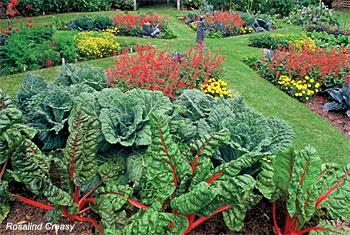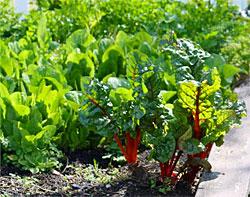Edible landscaping

From a historical perspective, edible landscaping is not new. In fact, some garden styles that we recognize from European landscapes were initially designed for food production. Large park-like lawns were actually communal livestock grazing areas, and borders of tightly clipped hedges encircling planting beds were designed to keep out small farm animals. Over time, the food production aspect of these gardens was replaced with ornamentals, and mowing equipment replaced grazing cattle and sheep.

While the concept of edible landscaping is not new, modern gardening practices based on University of California science-based research and information can make it easier for the home gardener to have a productive and beautiful edible landscape. The process of creating an edible landscape is the same as creating one with purely ornamental features. But by substituting fruits, vegetables, and herbs, where appropriate, for lawn, annuals and perennials, shrubs, and trees, the result is much more functional and sustainable, and good tasting too.
See the slides that were presented by Sacramento County Master Gardeners at the Edible Landscaping Workshop on March 9, 2013.



